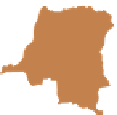Geography Reference
In-Depth Information
GREENLAND
15
Arctic Circle
13
FINLAND
10
NORWAY
ICELAND
11
RUSSIA
11
60°
ESTONIA
LITHUANIA
60°
SWEDEN
11
10
9
LATVIA
BELARUS
UKRAINE
DENMARK
10
10
UNITED KINGDOM
NETH.
10
12
POLAND
10
IRELAND
16
10
ATLANTIC
CZ. REP.
9
MOLDOVA
GER.
8
BELG.
10
SLVK.
11
10
KAZAKHSTAN
17
AUST.
9
9
10
HUNG.
10
11
SWITZ.
10
ROM.
10
MONGOLIA
21
SLOV
BOS.
FRANCE
12
OCEAN
CRO.
9
9
GEORGIA
ARMENIA
9 BULG.
12 MACE.
11
13 18
UZBEKISTAN
17
TURKMENISTAN
20
KYRGYZSTAN 24
TAJIKISTAN 26
ITALY
9
SERB.
MONT.
N.
KOREA
SPAIN
11
PORTUGAL
40°
40°
10
GREECE
9
JAPAN
11
15
TURKEY 18
CYPRUS
KOS.
ALB.
12
CHINA
12
7
18
AZERBAIJAN
S.
KOREA
9
TUNISIA
11
SYRIA
15
24
MOROCCO
IRAQ
19
IRAN
19
17
LEBANON
AFGHANISTAN
38
PAKISTAN
25
20
27
19
PACIFIC
BHUTAN
JORDAN
ISRAEL
21
NEPAL
ALGERIA
17
KUWAIT
22
LIBYA
24
19
15
WESTERN
SAHARA
BAHRAIN
EGYPT
25
16
32
QATAR
16
BANGLADESH
9
TAIWAN
Tropic of Cancer
U.A.E.
23
SAUDI
ARABIA
19
MYANMAR
(BURMA)
26
INDIA
21
20°
OMAN
LAOS
MAURITANIA
33
19
24
MALI
46
NIGER
51
ERITREA
34
25
THAILAND
13
VIETNAM
17
OCEAN
SENEGAL
GAMBIA
34
GUINEA-BISSAU GUINEA
SIERRA LEONE
LIBERIA
CHAD
39
33
YEMEN
PHILIPPINES
SUDAN
37
BURKINA
FASO
36
CAMBODIA
35
44
DJIBOUTI
25
25
38
28
37
IVORY
COAST
31
NIGERIA
36
SRI LANKA
39
SOUTH
SUDAN
CENTRAL
AFRICAN REP.
37
ETHIOPIA
43
17
BRUNEI
37
18
CAMEROON
33
36
SOMALIA
INDIAN
TOGO
BENIN
43
MALAYSIA
21
UGANDA
48
GHANA
36
KENYA
34
Equator
CONGO
41
0°
GABON
35
RWANDA
SINGAPORE
9
EQUATORIAL
GUINEA
35
37
PAPUA
NEW
GUINEA
26
OCEAN
THE
CONGO
38
41
BURUNDI
SOLOMON
ISLANDS
28
INDONESIA
18
TANZANIA
33
COMOROS
34
EAST TIMOR 26
ATLANTIC
ANGOLA
43
ZAMBIA
44
MALAWI
FIJI
41
VANUATU
22
21
MADAGASCAR
MOCAMBIQUE
¸
ZIMBABWE
32
20°
20°
20°
20°
20°
NAMIBIA
38
MAURITIUS
14
22
NEW
CALEDONIA
16
BOTSWANA
22
40
Tropic of Capricorn
AUSTRALIA
12
27
OCEAN
SWAZILAND
27
SOUTH
AFRICA
LESOTHO
20
NEW
ZEALAND
14
40°
40°
40°
0°
20°
40°
60°
100°
120°
140°
160°
60°
60°
60°
60°
SOUTHERN
OCEAN
Antarctic Circle
When a second wave of European colonization began
in Africa and Asia during the late 1800s, the Europeans
brought with them their newfound methods of sanitation
and medical techniques, and these had the opposite effect.
By the mid-1900s, declining death rates in Africa, India,
and South America brought rapid population increases to
these regions. At this point, new alarms and cautions of
worldwide overpopulation rang.
Although the global alarms continued to ring, they
subsided for populations in Europe and North America
when population growth rates began to decline in the
fi rst half of the 1900s. The cause was a signifi cant
decline in birth rates. Populations continued to grow,
but at a much slower rate. Many countries in Latin
America and Asia experienced falling birth rates later in
the twentieth century, which helped slow the global
population growth rate.
Why have birth rates declined? Throughout the
1900s, lower birth rates arrived fi rst in countries with
greater urbanization, wealth, and medical advances. As
more and more people moved to cities, both the econom-
ics and the culture of large families changed. Instead of
























































































































































































































































































































































































































































































































































































































































































































